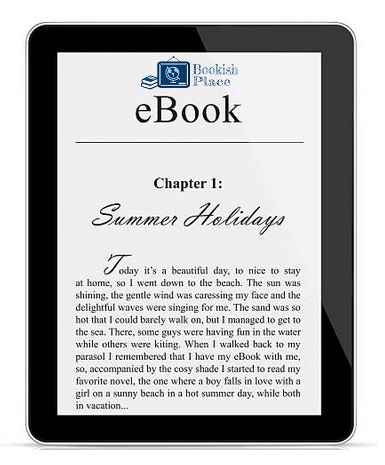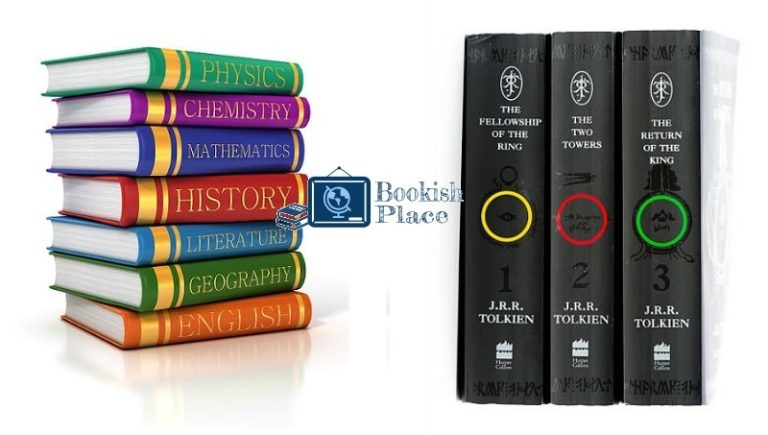Ink and Pixels: Navigating the Battle of Physical Books Vs eBooks
In an era dominated by digital technology, the age-old debate of Physical Books vs eBooks remains a significant topic of discussion among avid readers. The choice between these two formats involves a careful consideration of the unique advantages and drawbacks they each bring to the table.
While technology has revolutionized the way we access and consume literature, the tangible and sensory experience of holding a physical book is an integral part of many readers’ lives. On the other hand, eBooks offer unparalleled convenience and accessibility in a world where portability and instant access to vast libraries are highly valued.
As we delve into this ongoing discourse, we will explore the merits and demerits of physical books and eBooks, helping you make an informed decision about which format best aligns with your reading preferences and lifestyle.
Contents
What is a Physical Book
Physical books are traditional printed books made of paper or other materials. They are tangible, offering a multisensory reading experience with their weight, texture, and the smell of ink and paper.

Physical books have been cherished for centuries, providing a unique connection with the written word. They are often collected, displayed on bookshelves, and can be handed down through generations.
While less portable than eBooks, physical books have a timeless charm and are known for their durability, making them a preferred choice for many readers.
What is an eBook
eBooks are digital books that can be read on electronic devices like eReaders, tablets, or smartphones. They offer convenience and portability, allowing readers to carry an entire library in a single device.

eBooks are instantly accessible, often cost-effective, and can be downloaded with ease. They provide features like digital annotation and adjustable text size, making them suitable for a variety of reading preferences.
However, eBooks lack the tactile experience of physical books and may contribute to screen-related eye strain for some readers. Their longevity can also be influenced by technological changes.
Physical Books Vs eBooks
In this article, we will conduct a thorough comparison of Physical Books and eBooks, emphasizing their strengths and weaknesses from the reader’s viewpoint. This analysis of Physical Books vs eBooks will aid readers in making informed choices regarding the forms of books, depending on the environment and their preferences. Furthermore, it will provide valuable insights into the factors readers should take into account when purchasing books.
Aspect | Physical Books | eBooks |
Tangibility and Aesthetics | Provide a tactile, sensory experience with cover art, paper quality, and the feel of pages. | Lack physical presence but offer convenience and portability. |
Portability and Convenience | Bulky and less portable, not ideal for travelers. | Highly portable, allowing for a vast library on a single device, perfect for on-the-go readers. |
Accessibility and Affordability | Limited instant access, potentially more expensive. | Instant access to a wide range of titles, often more affordable, and sometimes even free. |
Eye Strain and Screen Time | Do not emit light, reducing the risk of eye strain. | Screen exposure can lead to eye strain; settings can be adjusted for comfort. |
Annotation and Highlighting | Tactile satisfaction when marking pages and taking notes. | Digital annotation and highlighting tools offer convenience and organization. |
Durability and Longevity | Can last for generations if well-maintained. | Dependent on technology and file formats, may become inaccessible over time. |
Environmental Impact | Require paper production, contributing to deforestation. | More eco-friendly, eliminating paper usage but with energy consumption concerns. |
Tangibility and Aesthetics
The aspect of Tangibility and Aesthetics in the physical books vs eBooks debate centers on the unique sensory experience offered by physical books.
Physical books engage readers in a multi-dimensional way, providing a tactile encounter with the weight, texture, and physicality of the book. The aesthetics of a well-designed book cover, the choice of paper quality, and the elegant typography are all elements that contribute to the overall appeal of a physical book.
Moreover, the unmistakable scent of freshly printed pages can evoke a sense of nostalgia and comfort. This tangible and aesthetic connection is an integral part of the traditional reading experience, offering a level of engagement that eBooks, existing purely in the digital realm, struggle to replicate.
Portability and Convenience
Portability and Convenience are critical factors when comparing physical books to eBooks. eBooks excel in terms of portability, as a single digital device can store a vast library, making it an ideal choice for those on the move. This convenience means that readers can carry hundreds of books in a lightweight, pocket-sized device, making it perfect for travelers, commuters, and anyone who values a compact, versatile reading experience.

On the other hand, physical books, while offering a tangible charm, can be less practical in situations that demand mobility. They tend to be bulkier and heavier, potentially limiting the number of books one can carry. This makes them less suitable for readers who prefer to have their entire library at their fingertips while on the go.
So, eBooks offer unparalleled convenience and portability, making them a top choice for readers with busy, mobile lifestyles, while physical books, though treasured for their tactile nature, are less convenient for those who require a more lightweight, transportable reading solution.
Accessibility and Affordability
Accessibility and Affordability are vital considerations in the debate between physical books and eBooks. eBooks offer unmatched accessibility, providing instant access to a vast library of titles from virtually anywhere with an internet connection. They eliminate the need to visit a bookstore or library, making them a convenient option for readers seeking instant gratification.
Furthermore, eBooks tend to be more affordable due to the absence of printing, distribution, and storage costs. Many eBooks are priced lower, and discounted or free options are widely available, making them a cost-effective choice for budget-conscious readers.
Physical books, while often pricier, remain accessible through libraries, used bookstores, and discounted sales. Although they may lack instant access to eBooks, they still offer affordability through various channels. The choice between these formats ultimately depends on individual reading preferences and budget considerations.
Eye Strain and Screen Time
Eye Strain and Screen Time are important factors to consider when evaluating the choice between physical books and eBooks. eBooks, being digital, require readers to engage with screens, such as tablets, eReaders, or smartphones. Extended reading on these screens can lead to digital eye strain, characterized by symptoms like eye fatigue, dryness, and discomfort. Additionally, the blue light emitted by screens can disrupt sleep patterns if eBooks are read before bedtime.

In contrast, physical books do not emit light, making them gentler on the eyes. Their paper pages offer a more comfortable reading experience for extended periods. This characteristic can be particularly advantageous for those who spend substantial time in front of screens for work or leisure and are seeking a respite from the digital world.
While screen settings can be adjusted to mitigate eye strain, physical books inherently provide a more eye-friendly reading experience, contributing to their appeal among readers looking for a break from electronic devices.
Annotation and Highlighting
Annotation and Highlighting represent a key point of divergence between physical books and eBooks, with each format offering unique advantages in this aspect. eBooks provide readers with the convenience of digital annotation and highlighting tools.
With the tap of a finger or a click of a button, you can underline passages, jot down notes, and easily search for specific keywords or annotations. This is particularly beneficial for students, researchers, and individuals who appreciate keeping their reading material organized and shareable in a digital format.
Physical books, on the other hand, lack these digital conveniences, but they offer tactile and tangible satisfaction when it comes to annotation. Readers can use pens, pencils, or sticky notes to mark pages, underline key phrases, and scribble in the margins.
For some, this hands-on approach to annotation is a cherished part of the reading experience, offering a sense of personal connection with the book. The choice between digital or physical annotation often hinges on individual reading habits and personal preferences, as both have their merits.
Durability and Longevity

Durability and Longevity are significant aspects to consider when weighing physical books against eBooks. Physical books, when well-maintained, can stand the test of time, becoming cherished possessions that can be passed down through generations. They are often made with high-quality materials, ensuring that they remain intact and readable for many years. This durability and longevity make physical books appealing to collectors and those who wish to preserve their reading material for posterity.
In contrast, eBooks are digital files that are dependent on technology. They can be vulnerable to changes in file formats and device compatibility. As technology evolves, some eBooks may become inaccessible if not regularly updated or converted. This aspect can be concerning for individuals who want their literary collections to withstand the test of time and remain accessible for future generations.
Ultimately, the choice between physical books and eBooks depends on your desire for long-term preservation and your preference for the tangible or digital reading experience.
Environmental Impact
Environmental Impact” is a crucial consideration when it comes to the debate of physical books vs eBooks. Physical books require paper production, contributing to deforestation, water consumption, and greenhouse gas emissions associated with the paper-making process. Additionally, the transportation and storage of physical books contribute to their carbon footprint.

On the other hand, eBooks are inherently more eco-friendly. They eliminate the need for paper, reducing the environmental impact associated with deforestation and paper manufacturing. However, it’s important to note that the production and disposal of electronic devices used for reading eBooks, as well as the energy consumption of server farms that store digital content, also have environmental implications. These aspects, including the energy used in the manufacturing and operation of electronic devices, are factors to consider in the overall environmental footprint of eBooks.
Ultimately, the choice between physical books and eBooks should align with your personal environmental priorities and an understanding of the entire lifecycle and environmental impact of both formats. Both have their ecological advantages and challenges, and readers can make more sustainable choices by considering their consumption habits and the broader environmental context.
FAQs:
Are eBooks more affordable than physical books?
Yes, eBooks are typically more affordable because they eliminate the costs associated with printing, distribution, and storage. These cost savings often result in lower prices for readers. Additionally, many eBooks are available for free or at a significantly reduced cost, making them a budget-friendly option, especially for voracious readers.
Sharing eBooks is often limited due to digital rights management (DRM) restrictions. Publishers and eBook retailers may impose restrictions on sharing to prevent unauthorized distribution of digital content. Some eBook platforms do offer limited sharing capabilities, but they usually require the recipients to use the same platform and be within your specified sharing limits.
Which format is better for reading in bright sunlight?
Physical books are better for reading in direct sunlight due to their non-reflective paper pages. They do not suffer from screen glare or reflections that can hinder visibility, making them the preferred choice for outdoor reading or bright natural light.
Do eBooks contribute to eye strain?
Extended eBook reading can contribute to eye strain, often referred to as digital eye fatigue, because it involves prolonged screen exposure. However, adjusting screen settings such as brightness, font size, and using eReaders with e-ink displays can help alleviate this issue. Taking regular breaks and practicing the 20-20-20 rule (looking at something 20 feet away for 20 seconds every 20 minutes) can also reduce eye strain.
Can you resell eBooks like physical books?
Reselling eBooks is generally not possible due to DRM and copyright restrictions. Digital rights management and copyright laws restrict the transfer and resale of eBooks to prevent unauthorized duplication and distribution. Unlike physical books, where you can sell or donate used copies, the digital nature of eBooks makes resale a challenging and often prohibited endeavor.
Conclusion
The choice between physical books and eBooks is a deeply personal one, influenced by individual preferences, reading habits, and priorities. Physical books offer a sensory and nostalgic experience, while eBooks provide unmatched convenience, portability, and often affordability.
Both formats have their advantages and drawbacks, and the decision should align with your specific reading needs and values. Ultimately, the best choice is the one that enhances your reading experience and aligns with your personal lifestyle and environmental considerations.
Hope you have enjoyed the article on Physical Books Vs eBooks. Whatever the form of a book, just do not stop reading!
Keep Reading, Be Bookish!

Dennis K. Hawkins is a writer, blogger, book critic and bookish person. He has written several books and regularly write blogs. As a bookish, he reads a lot and regularly share his opinion regarding books. Besides, he has a huge collection of unique accessories related to book. So, he is an expert and also a real user of the book accessories that he chooses to write on.







